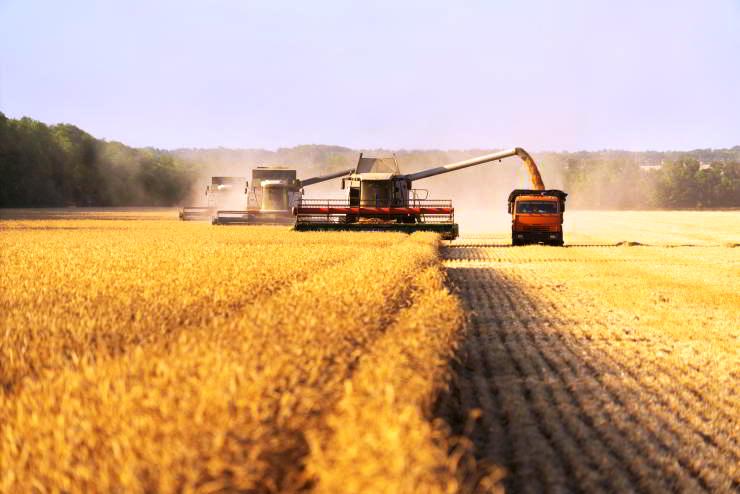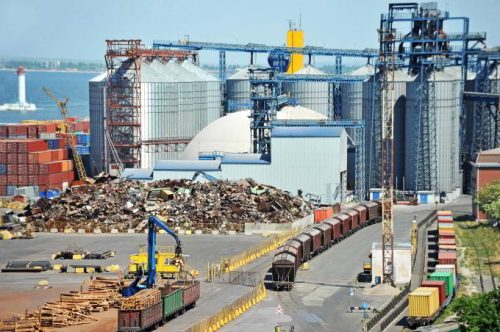Major producers.

Due to its particular climatic conditions together with the know-how of European farmers and the means deployed by the CAP for over half a century, the European continent is a particularly favourable place for the cultivation of wheat, to which it allocates approximately 22 Mha, or 10% of the world total.
In recent years, European production has fluctuated between 125 and 140 Mt, while exports regularly exceed the threshold of 30 Mt.
This makes Europe one of the largest producers of wheat on a global scale, ranking second after the People’s Republic of China, as well as the second world exporter after the Russian Federation and ahead of the United States. These advantages, determined by the aggregation of individual countries and the legal and economic framework of the markets, would not be such if considered in a disaggregated form and observed by Member State. Therefore, the European Union as a whole, with an average of 17% of world flows over the last ten years of annual exports, constitutes a real agro-exporting power of wheat destined for the countries of North Africa, Algeria, Egypt and Morocco, but also China and Nigeria, while 40% of production remains within the European Union.

France. Mont Saint Michele abbey in a beautiful summer day. France alone accounts for an average of one-third of the wheat exported by the European Union. 123rf
Among the major producing countries, we have France, which alone represents on average a third of the wheat exported by the European Union, followed by Romania with almost 20% of the volume, then Germany with 15%, Lithuania with 7%, and finally Latvia and Bulgaria with 6% each. Around 40% of European wheat exports come from the areas of Eastern Europe that joined the European Union in the 21st century.
However, despite the European continent being one of the main areas of wheat production on a global scale, a quota of the product amounts to around 4-6 Mt per year of which a third is durum wheat. The main countries of origin of these imports are Canada, but also Ukraine, Russia, the United States, Moldova and the United Kingdom.
Furthermore, since the European Union does not have a common external agricultural (or cereal) policy, as the CAP acts as a reference framework only as an internal organisation and regulation tool, the various national products enter into competition with each other once they cross the European borders.

Grain dryer, train and scrap metal in the port of Odessa, Ukraine. The Russian-Ukrainian conflict has had a major impact on Europe. The agri-food sector has not been spared and has suffered significant losses. 123rf
The negative effects of the Russian-Ukrainian conflict that have strongly impacted Europe have not spared the agri-food sector, which has recorded significant losses. The Ukrainian crisis has generated significant distortions about trade between Ukraine and the countries of the Union, upsetting the balance on the quantities of imports/exports existing between these two areas. If we look closely, the quantities exported by the European side to Ukraine, in the period before the conflict, were equal to three billion euros, and imports were seven billion. A parameter completely overturned in 2022 with European exports always remaining at the same level while imports recorded a considerable increase, equal to thirteen billion, of which five related to direct imports from the five countries on the Eastern borders: Poland, Hungary, Bulgaria, Slovakia and Romania.
This imbalance, as is obvious, has generated a close confrontation within the European Union in which the wheat resource has been the main object of contention. The suspension of duties on Ukrainian exports to the EU has diverted part of the Ukrainian harvest, no longer able to reach the previous outlet markets, towards Europe, flooding the markets of the eastern part with low-cost wheat. The producers of these countries have thus found themselves having to deal with a new competitor present on the market, also induced by the Commission, whose exported quantities, of a different quality compared to the European ones and less reliable in terms of health safety, have generated, a considerable drop in prices resulting in significant losses.

Tractor in the field. Spraying fertilization of wheat fields. 123rf
The European market, therefore, was the first to suffer the consequences of the impact of the conflict and the reconfiguration of value chains. Furthermore, within this intricate scenario that saw farmers in this part of Europe protesting with their governments and with the Commission to block the sending of aid to Ukraine until an agreement was found on wheat imports, other countries of the Union – Spain, Italy and France – continued to buy Russian wheat. A scenario in which the agri-food sector finds itself besieged by Ukrainian wheat imports, at a time when the sector must also pay the price resulting from other crises that, combined, gave rise to the sensational protest of tractors on the streets of Europe. (Open Photo: Machine harvesting field of wheat. 123rf)
F.R.



